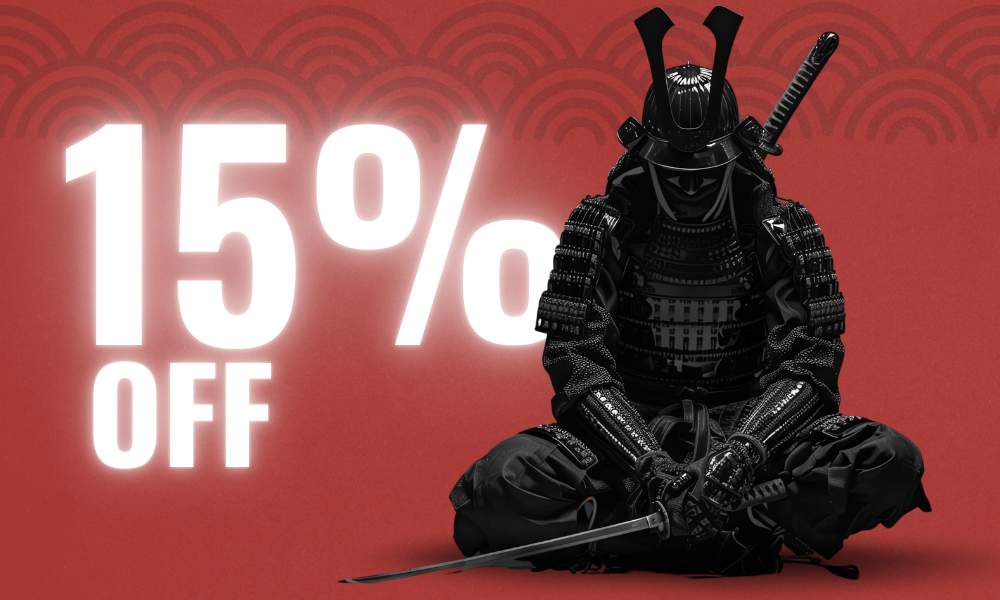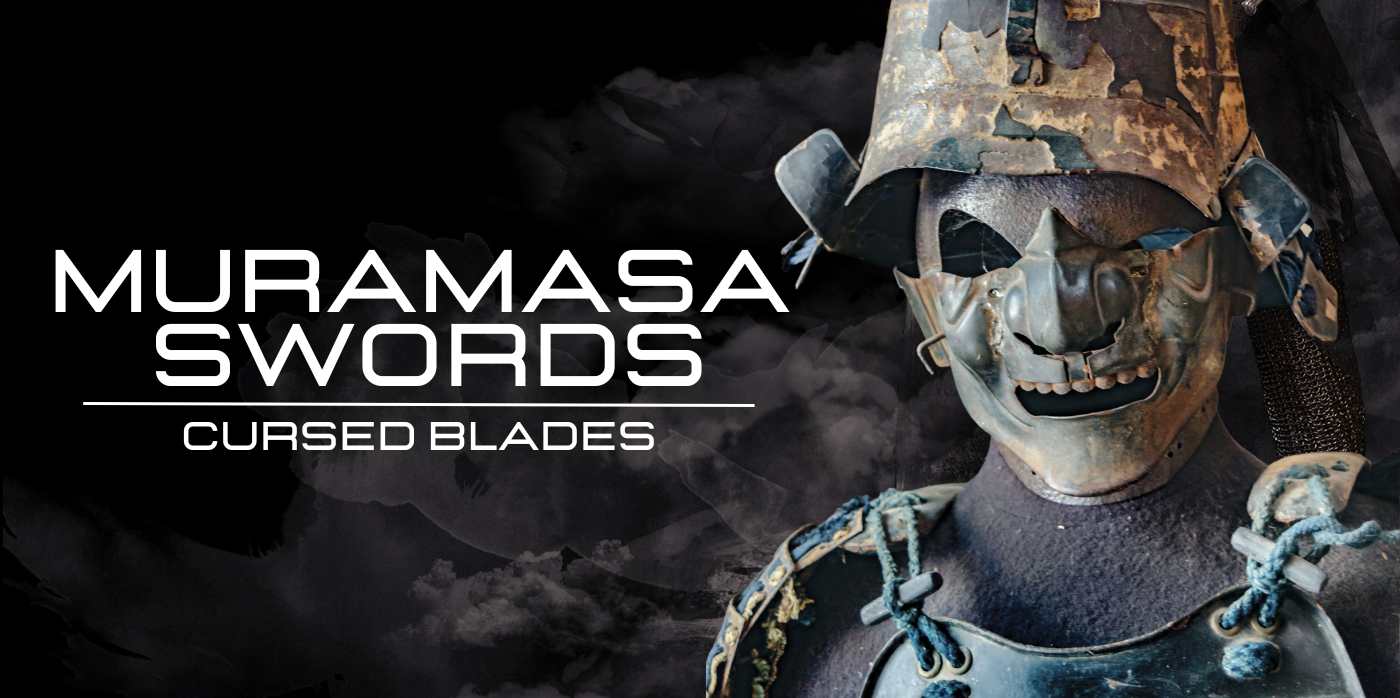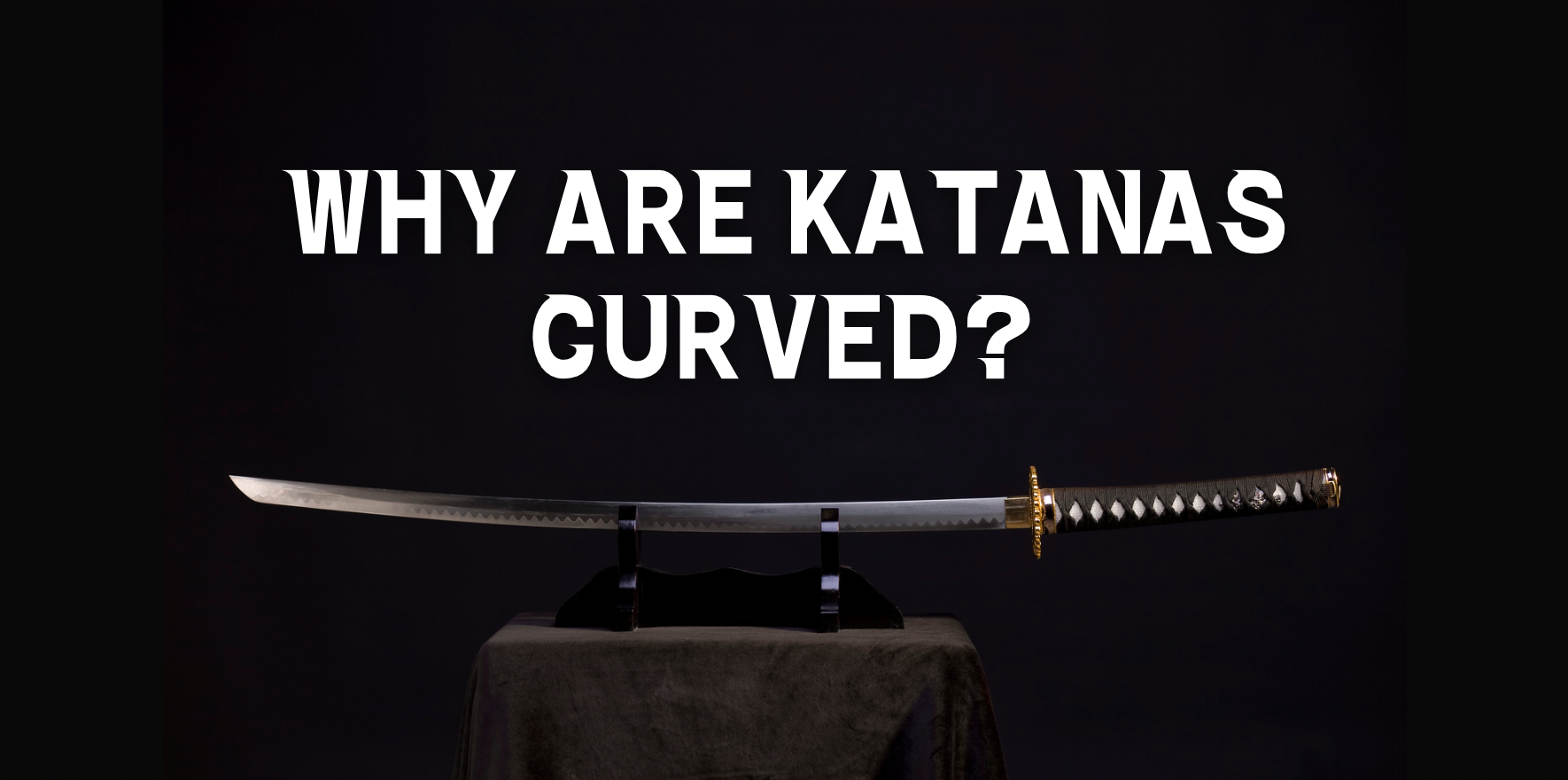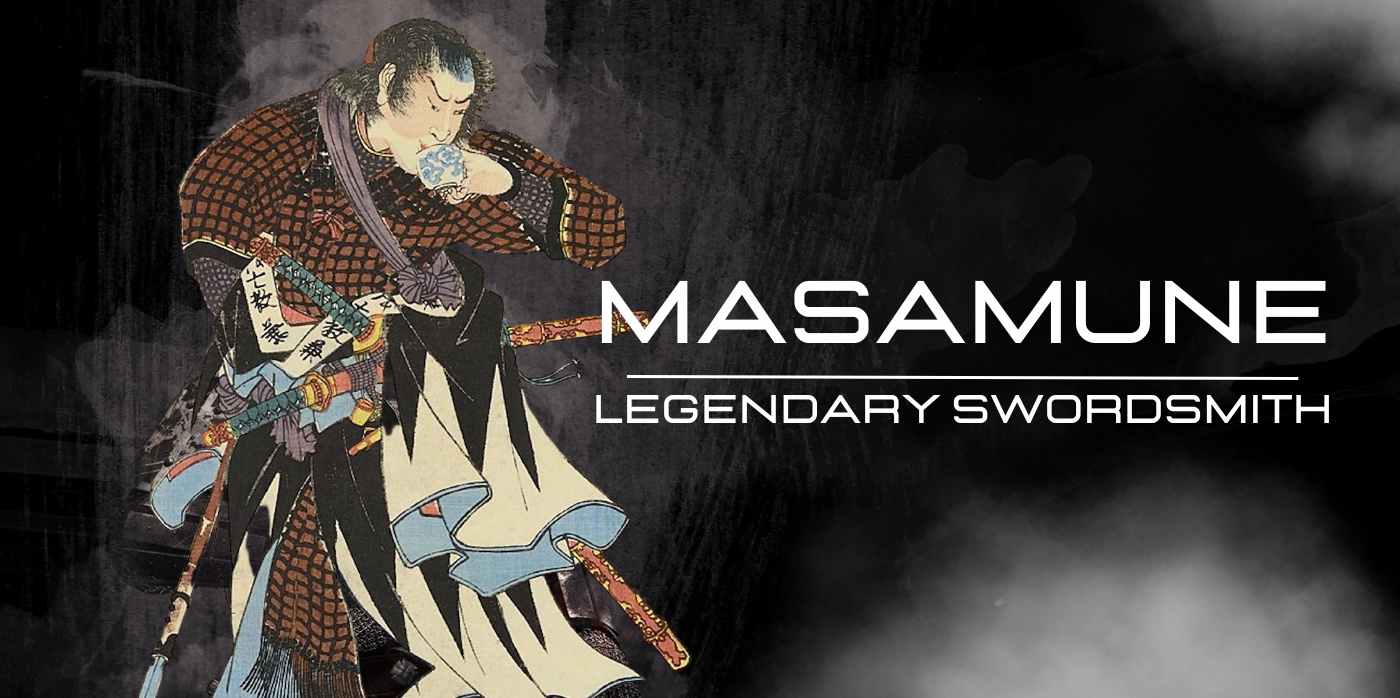The name Muramasa often conjures images of cursed swords, steeped in mysticism, and unparalleled craftsmanship. But who was the man behind these legendary blades? In this in-depth blog article, we will explore the mysterious life and craft of Muramasa, the renowned Japanese swordsmith. Shrouded in a blend of myth, legend, and historical uncertainty, Muramasa remains a truly fascinating character in the realm of Japanese katanas and sword-making expertise. 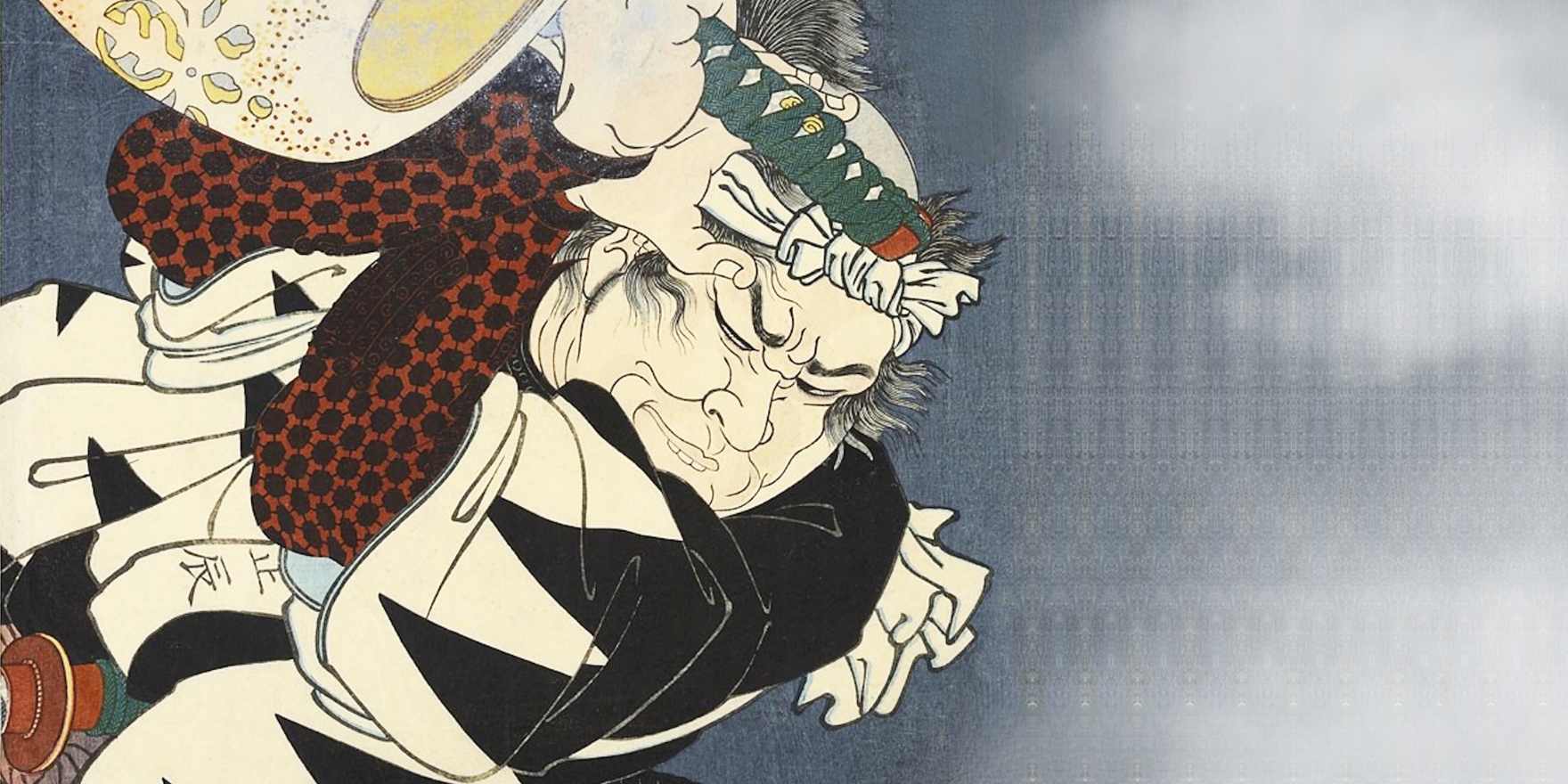
Who is Muramasa
Believed to have flourished during Japan's Muromachi era (14th-16th centuries), Sengo Muramasa remains an iconic figure in the realm of swordsmithing. Known for crafting blades of extraordinary caliber, Muramasa's creations were highly sought after by samurai and other warriors. While often compared to Masamune, another master swordsmith, the swords forged by Muramasa have garnered a darker, more mystical reputation—they are frequently described in myths and legends as "enchanted" or "eager for blood."
Much about Muramasa's life remains shrouded in mystery, with numerous myths and folklore enveloping the scant historical facts. The legacy of his craftsmanship survives through the Muramasa school, which continued to produce swords of exceptional quality after his time. Located most likely in Japan's Ise Province, the blades emerging from this school are often collectively referred to as "Muramasa," even if he himself did not forge them.
As time has passed, the mythos around Muramasa has only expanded, enriched by narratives in traditional kabuki theater to contemporary video games. In popular culture, the cursed samurai Muramasa blades are often characterized as having almost malevolent traits—driving their bearers to acts of violence or self-harm. One well-known tale even claims that Muramasa's blades were so exquisitely made that they could slice through anything, even air and water.
Despite the romanticized tales and legends, it's crucial to recognize that Muramasa was, above all, a master craftsman whose blades stand as a testament to his skill. Today, his works are treasured items for collectors and sword enthusiasts, appreciated not just for their craftsmanship but also for the compelling lore that has been woven around them over centuries.
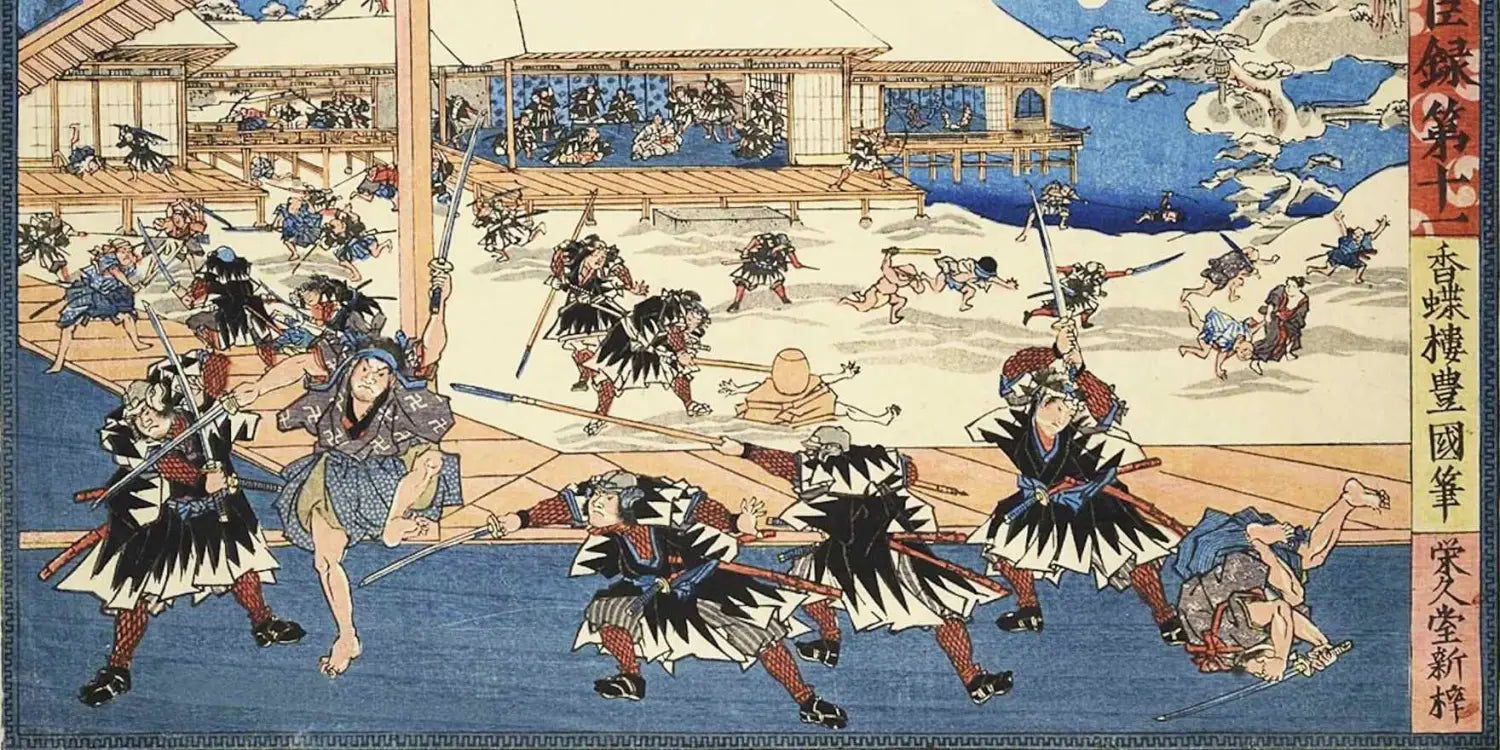
Historical Context: Muramasa and the Muromachi Period
Set against the tumultuous canvas of the Muromachi period (1336–1573), an era marked by political upheaval and constant warfare in Japan, Muramasa emerged as an iconic figure in the realm of Japanese swordsmanship. This period was a crucible of military coups, shifting allegiances among clans, and internal conflicts, conditions that fueled an unrelenting demand for superior weapons, especially well-crafted swords. Amid the chaotic landscape of the era, Muramasa established himself as a luminary in the field of Japanese sword-making.
Located in the Muromachi district of Kyoto, the center of the Ashikaga shogunate's power, the period was a complex tapestry of social upheaval and vibrant cultural development. Alongside the chaos, the era saw remarkable developments in the arts, tea ceremonies, and No theatre. In the realm of sword-making, the Muromachi age was transformative. It introduced innovative styles and techniques of combat, necessitating advancements in sword craftsmanship. Muramasa was not merely a craftsman; he was an innovator dedicated to enhancing the structural integrity, sharpness, and overall performance of his blades.
Details about Muramasa's life remain scarce, often interwoven with myths and folklore. Nonetheless, it's widely believed that he established the Muramasa school in Ise Province, a school that garnered acclaim for its high-quality swords, some of which are said to have armed legendary samurai warriors. Muramasa's swords, however, also developed a notorious reputation—folklore often portrays them as "cursed" or "insatiable" in their thirst for blood.
This dual perception of Muramasa's blades as exceptional yet perilous likely stems from the intricate socio-political fabric of the Muromachi period. Swords during this era were not mere instruments of war; they were potent symbols of authority, honor, and even spiritual essence. The juxtaposition of being a beautifully crafted artifact and a purportedly cursed object makes Muramasa's legacy especially compelling, capturing the fascination of scholars and popular culture enthusiasts alike.
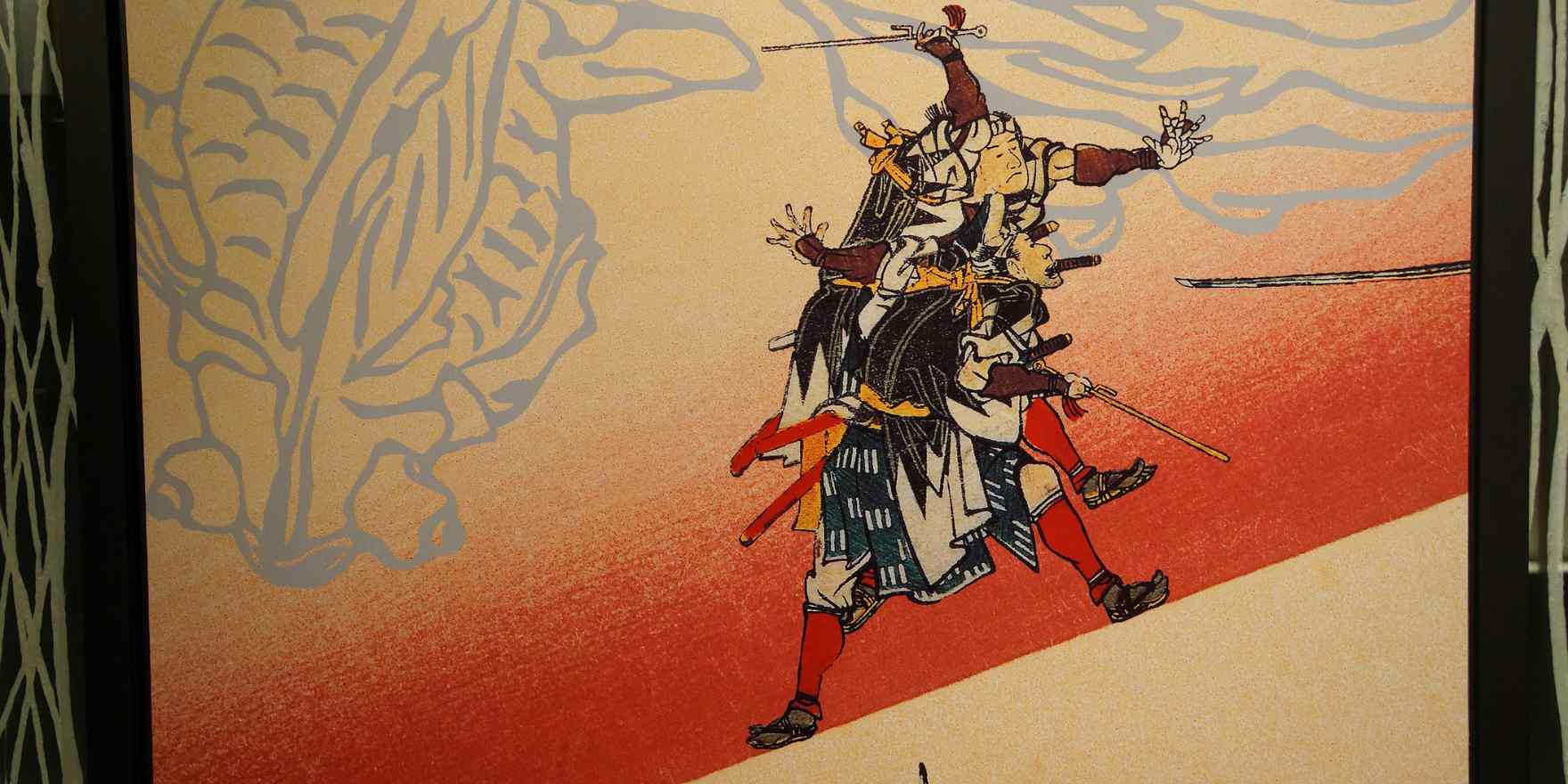
The Muramasa Curse: Fact or Folklore?
The tale of Muramasa's swords wouldn't be complete without addressing the enigmatic "Muramasa Curse," a legendary aspect that has both fascinated and alarmed sword enthusiasts and historians alike. According to lore, Muramasa blades are not just exceptional weapons; they are also believed to be cursed or "bloodthirsty," compelling their wielders to commit acts of violence, even against their own will.
Origins of the Curse: Muramasa Swords
The origins of the so-called Muramasa Curse are deeply rooted in Japanese folklore and various historical anecdotes. Some theories suggest that Muramasa himself imbued the swords with a violent or malevolent spirit, while others propose that the curse emerged over time due to the swords' involvement in numerous acts of violence. It's said that once a Muramasa sword tastes blood, it craves for more.
Skepticism and Reality
Despite the captivating tales, there is a considerable amount of skepticism regarding the existence of the Muramasa Curse. Some scholars argue that the stories are exaggerations or outright fabrications, intended to either glorify or demonize the blades for political or theatrical reasons. In fact, the ruling Tokugawa clan, which came to power after the Muromachi period, was said to consider the blades unlucky, perhaps because several clan members met unfortunate ends by Muramasa swords. Thus, the swords—and by extension, Muramasa himself—were stigmatized.
Yet, even in the absence of definitive proof, the notion of the curse adds to the complexity and allure of Muramasa swords, making them a subject of continued interest and study.
Regardless of the intricate tapestry of myth and reality surrounding him, there's no questioning Muramasa's unparalleled craftsmanship. Whether or not one subscribes to the idea of his blades being cursed, their extraordinary quality and artistry stand beyond dispute. They remain coveted collector's items, symbolizing both the zenith of ancient Japanese craftsmanship and a tantalizing tale that captures imaginations to this day.
Signature Traits of Muramasa Swords
Muramasa swords are celebrated for a range of unique attributes that make them stand out in the world of Japanese swordsmithing. Below are the distinct features that make Muramasa swords unique:
Muramasa-ba (Blade Pattern)
The Muramasa-ba refers to the specific hamon or temper pattern that appears along the edge of the blade. Muramasa swords are famed for their distinctive, undulating temper lines, which are often likened to flames or even rolling waves. These visually arresting patterns are not just for show; they also indicate the different levels of hardness throughout the blade, contributing to both its cutting power and durability. The mesmerizing Muramasa-ba is one of the most easily recognizable features that set these blades apart from others.
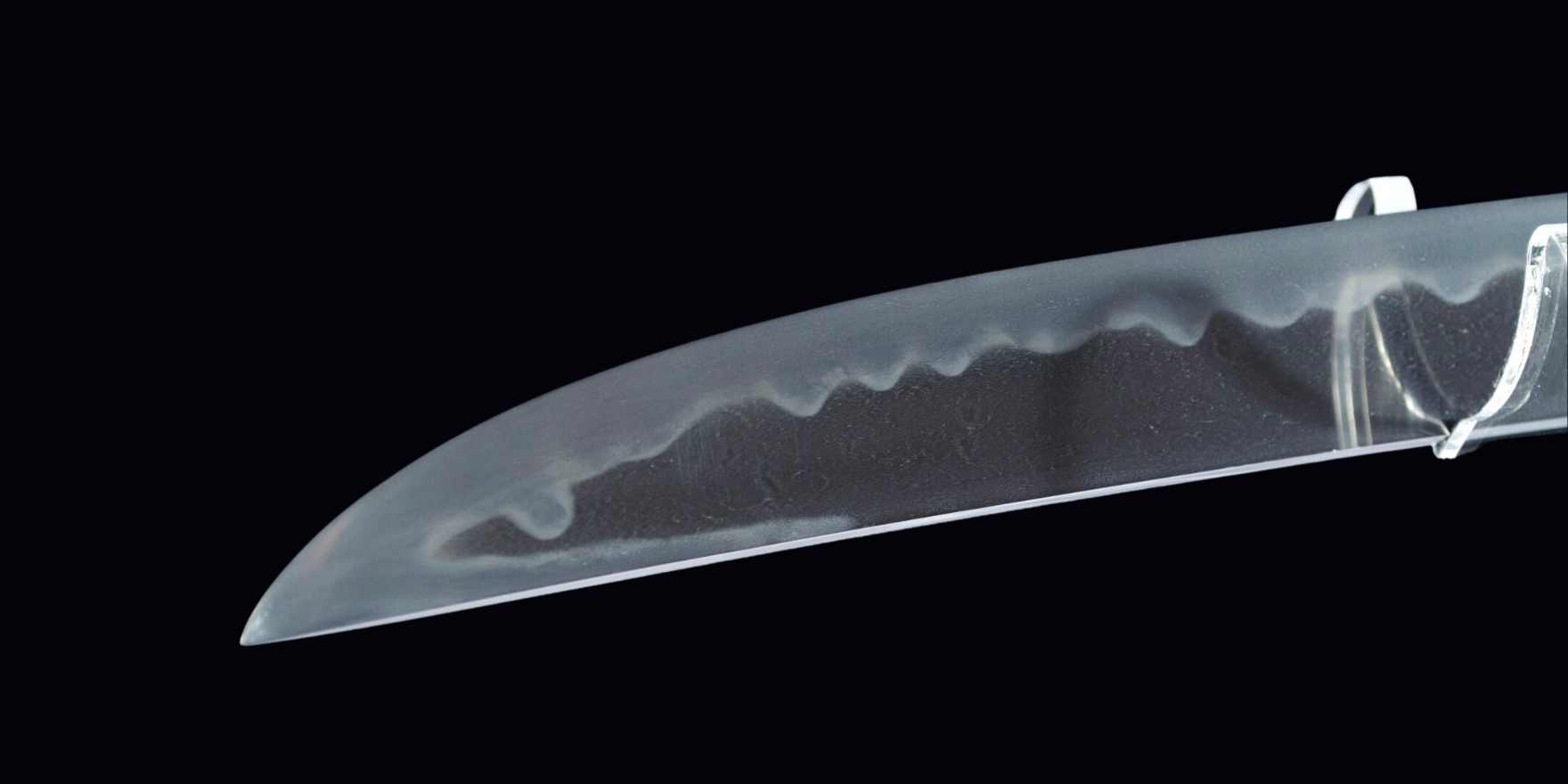
Muramasa-nakago (Tang)
The nakago, or tang of the sword, is the portion of the blade that extends into the handle. While it's not visible when the sword is fully assembled, it's crucial to its structure and often contains the swordsmith's signature. Muramasa's nakago is noted for its meticulous craftsmanship, often featuring file marks and an overall finish that suggests both practicality and artistry. The tang's shape and file marks can sometimes even offer clues to the period in which the sword was made.
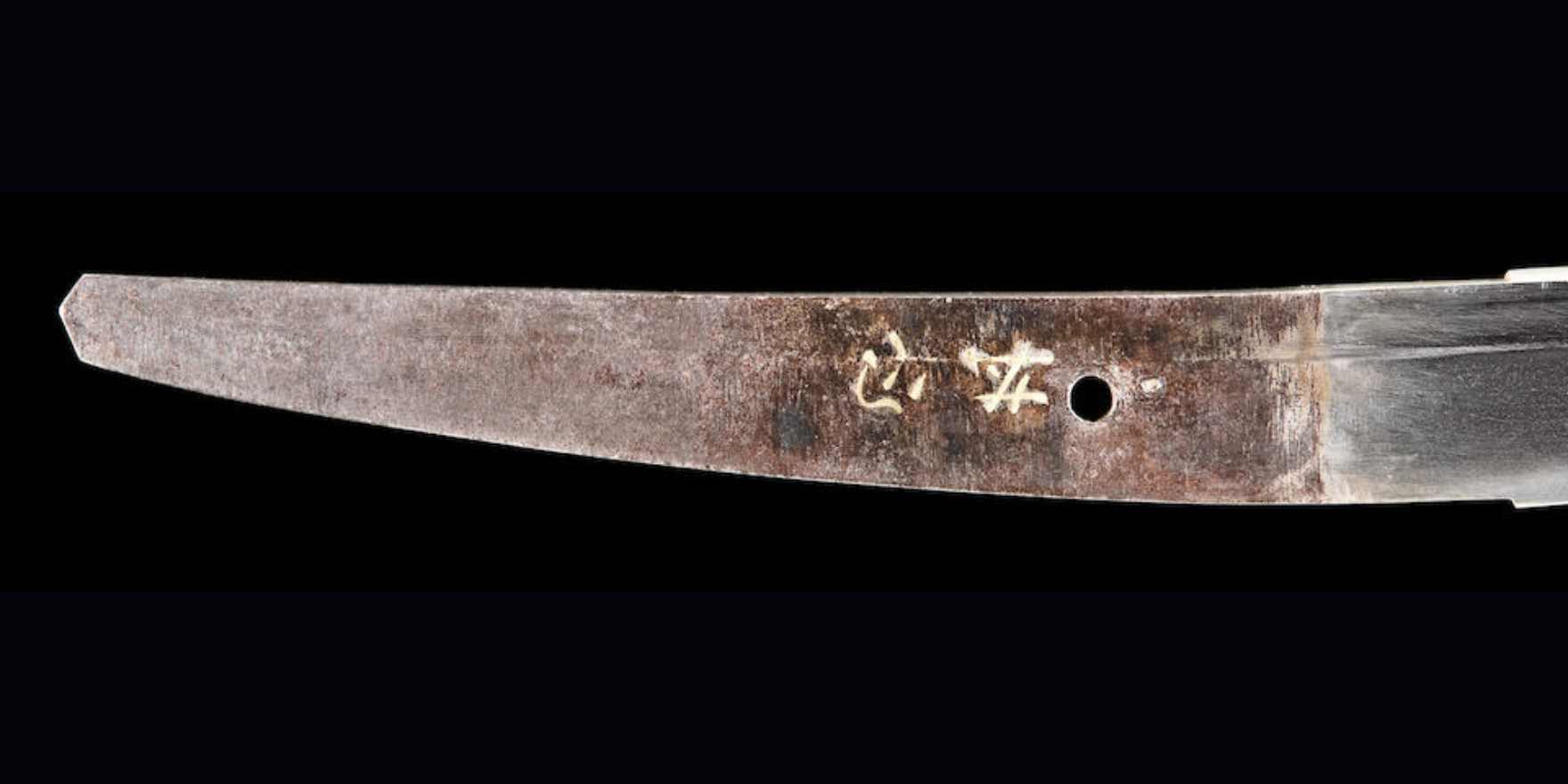
Cursed Reputation
As much as Muramasa swords are respected for their technical merits, they are equally infamous for their supposed cursed nature. This reputation stems from numerous myths and legends, suggesting that these swords have a tendency to "take control" of their wielders, inciting them to acts of violence or aggression. This controversial trait adds an additional layer of mystique to Muramasa blades, making them a subject of intrigue and debate.
These signature traits collectively contribute to the legendary status of Muramasa swords, making them highly sought-after by collectors and enthusiasts alike.
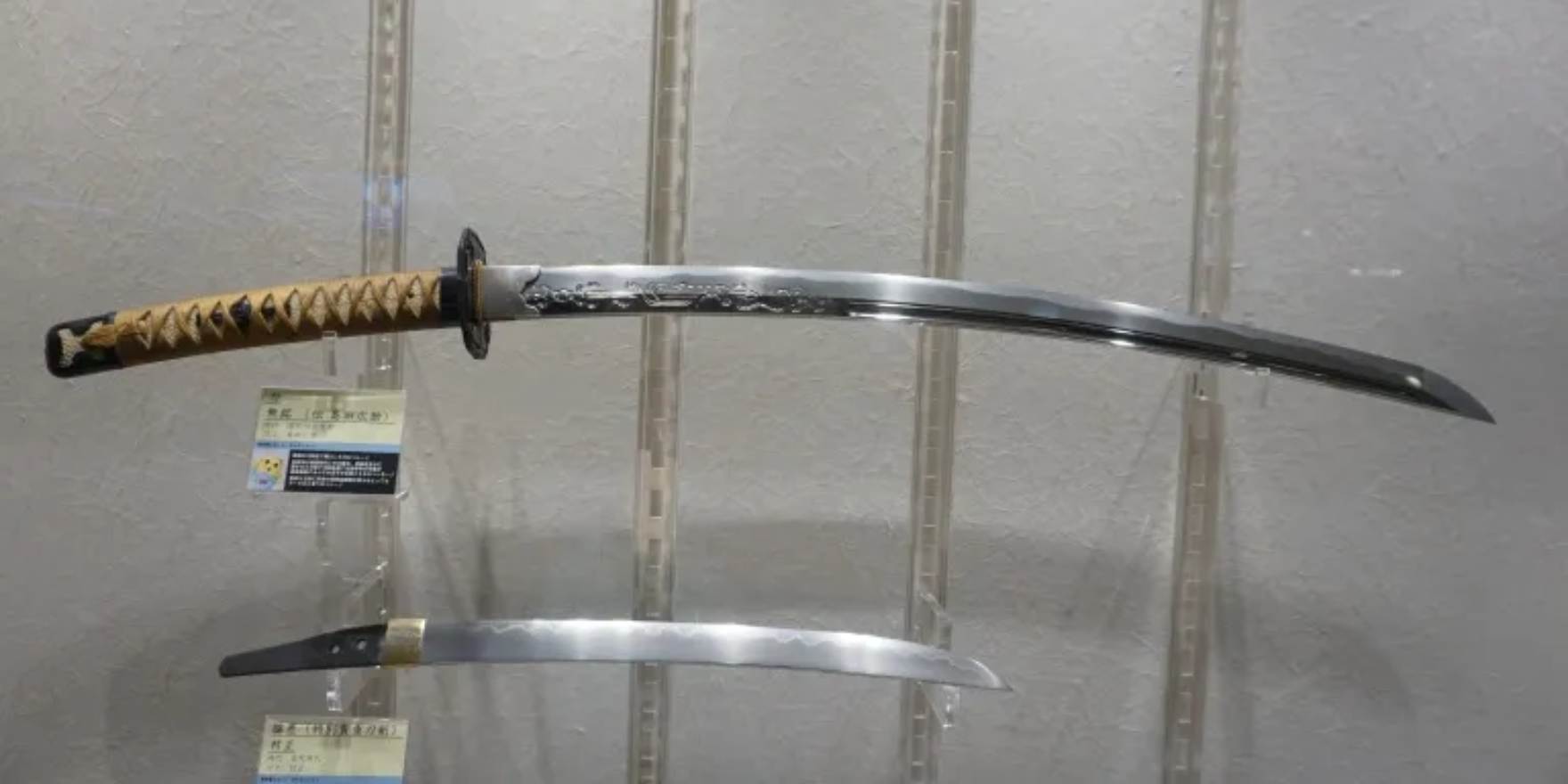
Genuine Muramasa sword | Credit: Soranews24
Muramasa's Influence in Literature and Pop Culture
The Muramasa Curse has been a popular subject in various forms of media, from traditional Kabuki plays to modern-day video games and manga. Often, these stories portray the blade as possessing its wielder, forcing them to commit heinous acts or risk becoming its next victim. This aspect adds a layer of dark mystique to the already exceptional craftsmanship of Muramasa blades. This captivating figure has inspired an array of artistic mediums, from classical literature to contemporary entertainment. Below, we delve into the various ways Muramasa has been portrayed, celebrated, and mythologized in literature and pop culture.
Literature and Theatre
Long before the advent of modern entertainment, the mystique surrounding Muramasa found its way into traditional Japanese literature and theatre. Kabuki and Noh plays would often feature characters wielding Muramasa blades, usually signifying a dramatic turn of events or adding layers of complexity to the plot. The swords, and by extension, their creator, became symbols of various themes—be it tragedy, betrayal, or supernatural elements.
Modern Video Games
In the world of video games, the Muramasa name frequently appears as a powerful weapon or artifact, imbued with mystical qualities. Games like "Final Fantasy," "Metal Gear Rising", "Nioh," and "Sekiro: Shadows Die Twice" feature Muramasa swords, often requiring players to undertake complex quests to acquire these coveted blades. Their representation in these games typically hews closely to the legendary sharpness and supposed curse, making them highly sought-after yet risky items.

Muramasa Sword in Metal Gear Rising
Manga and Anime
Muramasa has also made a splash in the world of Japanese manga and anime, where the blades are often depicted as possessing magical or cursed properties. Series like "Bleach" or "Demon Slayer" have characters that wield swords with qualities reminiscent of the legendary Muramasa blades. The narrative around these weapons usually revolves around their deadly effectiveness and the mystical curses they may carry.
Film and Television
In global cinema, from Eastern to Western storytelling, the tale of Muramasa has shown remarkable adaptability, finding its place in various genres such as historical dramas and adrenaline-fueled action movies. Although the swords themselves might not always occupy center stage, their presence frequently marks a pivotal juncture in the storyline or becomes a defining feature of a character's persona.
The Ubiquity of the Muramasa Legend
What's especially striking is the way the Muramasa legend has permeated global awareness. Even for those who lack a deep understanding of Japanese history or the art of sword-making, the name "Muramasa" might still ring a bell, whether encountered in a video game, film, or literary work.
The Rarity and Value of a Muramasa Blade Today
In today's market, a genuine Muramasa blade is a rarity, making it a prized possession for collectors and enthusiasts alike. The scarcity is due in part to the sword's storied history; many were destroyed or lost over centuries of warfare and political change. Additionally, during certain periods of Japanese history, possession of a Muramasa sword was considered a criminal act due to its "cursed" reputation, contributing further to its rarity.
The Muramasa blade has become an emblem of exceptional craftsmanship and a historical artifact that encapsulates the essence of an era. Possessing an authentic Muramasa blade is like owning a tangible slice of Japanese history, elevating its worth considerably. Genuine swords from Muramasa have fetched prices in the tens of thousands of dollars at auctions and are anticipated to gain in value as time progresses.
It's crucial to highlight that the market is rife with counterfeits due to the sword's exceptional value and scarcity. Therefore, authentication by reputable experts is crucial for anyone considering purchasing one. The layers of mystique, historical significance, and exemplary craftsmanship make the Muramasa blade not only a weapon but also an investment and an heirloom. You can also check our hand-forged samurai swords, if you'd like to display an exceptional katana in your home.
Muramasa: A Legacy That Lives On
To conclude... While much about the man known as Muramasa remains shrouded in mystery, the swords that bear his name continue to captivate people worldwide. They stand as lasting tributes to a master craftsman whose life story may be enigmatic but whose impact on the world of Japanese swordsmanship is indisputable.
Whether you are a history enthusiast, a sword collector, or someone captivated by the mysterious allure of ancient myths, the story of Muramasa offers an exciting journey through history, legend, and unparalleled craftsmanship.


